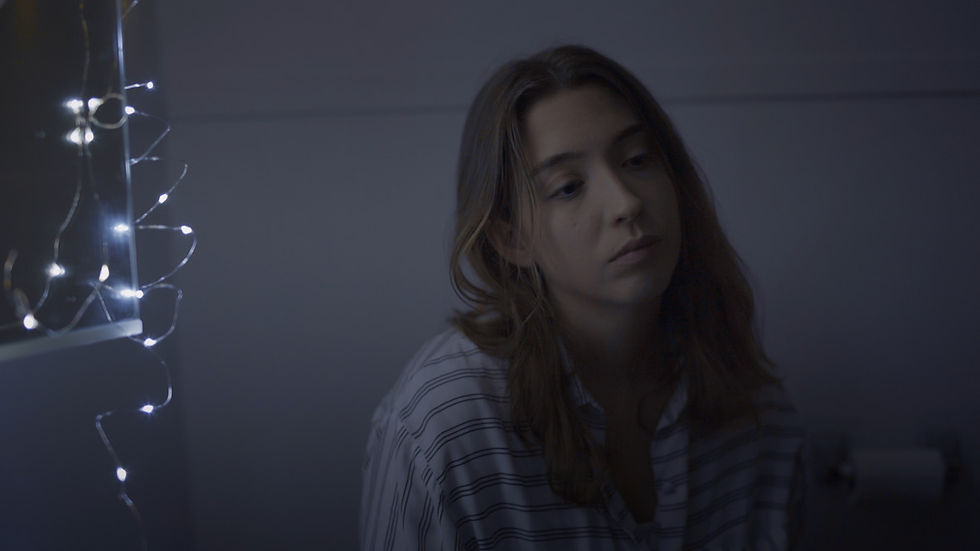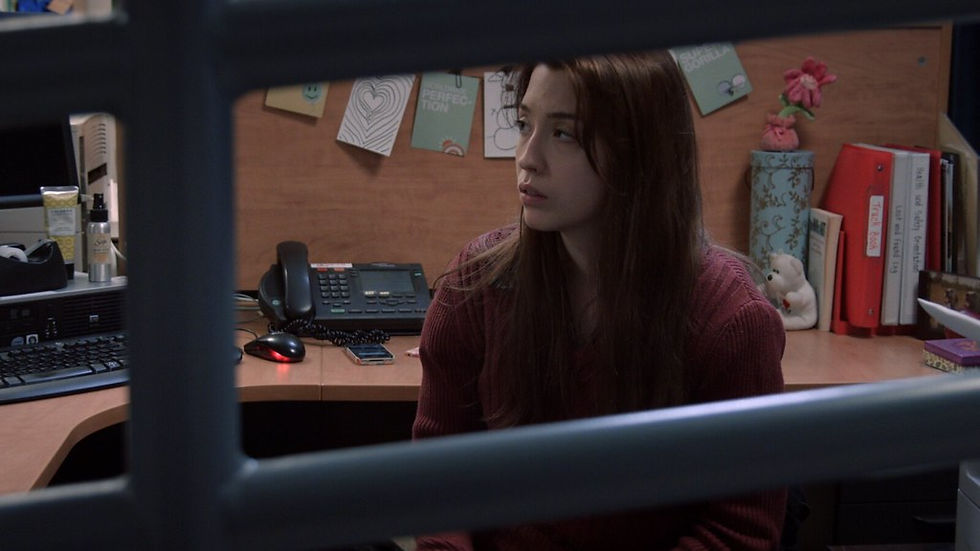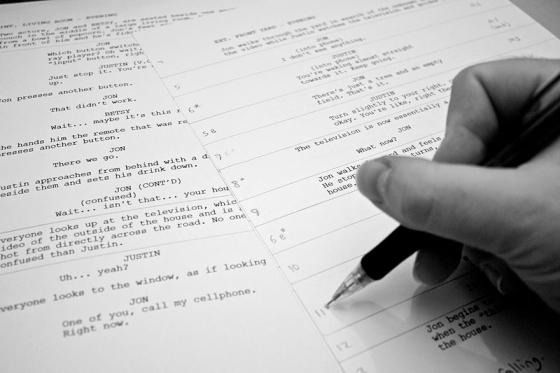The Meeting of Minds: A Conversation with Carolyn Yonge
- khailareyno
- Apr 25, 2024
- 4 min read
Updated: Apr 30, 2024

After That (2020)
Carolyn is an acting instructor at Leblanc School of Acting, and I was fortunate enough to attend several of her classes. With over ten years of experience in acting for film and television, as well as an additional seven years in filmmaking, Carolyn brings a wealth of knowledge to her craft. She has written two short films, both of which have garnered multiple awards, showcasing her talent not only as a writer but also as an actress.
During my time in her classes, Carolyn provided invaluable guidance on enhancing my technique, exploring emotions, and understanding non-verbal behaviour in scripts. Her approach to teaching is rooted in spontaneity, encouraging her students to find the heart and essence of their characters to truly embody their roles.
In addition to her work as an instructor, Carolyn has an impressive list of credits in film and television, including roles in the V.C. Andrews - Ruby Landry Series, "After That," "Undercover Cheerleader," "Love at Sunset Terrace," "Flora & Ulysses," "The Professor," "The Man in the High Castle," and "Sensitive Parts." Her dedication to her craft and her ability to bring characters to life on screen make her a truly inspiring figure in the world of acting and filmmaking.
I had the incredible opportunity of talking with Carolyn (via Email). So In this chapter, readers can expect to gain a deeper understanding of Carolyn Yonge's perspective on the topic at hand. This could include her approach to writing, her creative process, or her advice for aspiring writers.

Sensitive Parts (2017)
How would you incorporate nonverbal cues into a script? Could you give an example?
Carolyn's Response:
Most writers, including myself, would incorporate a nonverbal cue into the script through formatting. There are several ways scripts are formatted and genre / media type also play into this.
Most are written to the actor in the action/blocking of the scene
Example:
Dani looks to Meredyth and Constance clocks this.
Detective James reaches out and touches the picture. Michael sweats.
We know the clue Detective James is looking for is behind the picture ~ this would have been shown to us in a previous scene {as the audience}
The other formatting is in parenthetical expressions - the action under a character name in the script
Example:
JOAN
(Excitedly)
We're going to the zoo?
What techniques do you use to ensure that the nonverbal cues in your scripts are nuanced and realistic?
Carolyn's Response:
As a teacher I also try to get the actor to find the motivation in the non verbal cue. Let the emotion move you not the text. Feel the feeling first and let the instrument move for you.
You have to write compelling characters with good dialogue for an actor to pick it up 100% of the time. But an experienced actor will find these non verbal cues and always be nuanced. Only bad actors show how they're feeling, good actors hide the feelings like humans do.
What is your process for researching and incorporating authentic nonverbal cues into your characters?
Carolyn's Response:
For me, who is this person. What has shaped them? What does everything mean to them, ie. what do they think and feel about everything they touch, sense, look at. What's the history of that? What's their opinions? Thoughts? Morals? Values? how are the things effecting them in the right now, as this is happening.
Can you share an example of a script where nonverbal communication played a significant role in the storytelling?
Carolyn's Response:
I think one script and film to look at where non-verbal story telling played a huge role is Atonement. That is a very quiet film that is told a lot in the actors emotions and eyes. Another one is A portrait of Lady on Fire. Actors have to be vulnerable enough to go there.
How do you ensure that the nonverbal cues you write are effectively translated on screen by the actors and directors?
Carolyn's Response:
Formatting, if I want attention drawn to it. I will write it on its own line. If you put it in with the other stage direction/action then Actors and director might not see it. If im directing then I will look for it on the day and direct into the cue.
Can you provide examples of how you use nonverbal cues to establish the tone or atmosphere of a scene?
Carolyn's Response:
You have to reference images in your action, use visually descriptive words. Paint a picture with those words and references so that the filmmakers don't get anything lost in translation.
Here's another interview that stars Carolyn Yonge where she dives deeper into her career
Let's Talk About Acting, Character Creation and Performing with Carolyn Yonge! | Chat with Dan Show
Based on the insights shared by Carolyn Yonge, it's clear that incorporating nonverbal cues into scripts requires thoughtful consideration and understanding of the character's motivations and emotions. The use of formatting, such as action descriptions and parenthetical expressions, is essential for conveying these cues to actors and directors.
Carolyn emphasizes the importance of letting the emotion move the actor, rather than relying solely on the text. This approach allows for more nuanced performances, where actors can convey emotions subtly and realistically. To achieve this, writers must create compelling characters with rich inner lives, including their thoughts, feelings, and values.
She also highlights the significance of visual storytelling in films, citing examples where nonverbal cues play a pivotal role in conveying the story. In terms of formatting, Carolyn suggests using visually descriptive words and referencing images to ensure that filmmakers understand the intended emotions and actions.
In conclusion, mastering the art of incorporating nonverbal cues into scripts requires writers to be attentive to character development, utilize effective formatting techniques, and paint vivid pictures with their words. This approach not only enhances the script but also contributes to more authentic and engaging performances on screen.


